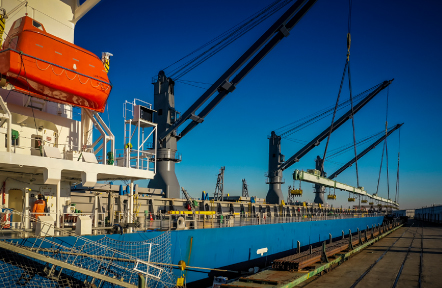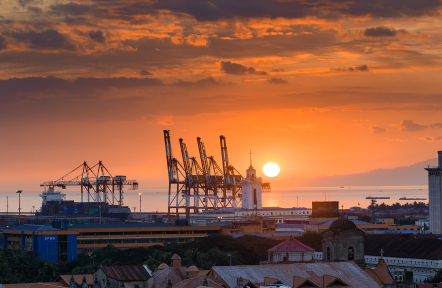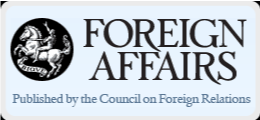
On August 9, 2015, Singapore celebrates its fiftieth birthday. This date marks an important achievement for Singapore, given its abrupt expulsion from the Federation of Malaysia. Today, Singapore is a city-state and nation-state, the only one of its kind in the world.
In 1965, many analysts would not have bet that Singapore could be viable in a tumultuous region, much less enjoy economic success and stability or maintain regional peace and security.
The U.S.-Singapore relationship flourished after Singapore’s independence; previously, the island was a British colony that evolved within the British orbit. But World War II ended the British Empire, and in 1968 the Labor Government announced its intention to withdraw British forces east of the Suez Canal.
This shift created new security and economic calculations for Singapore. Even before Singapore separated from Malaysia, then Prime Minister Lee Kuan Yew considered the
United States the only country that could counter the spread of communism globally and in Asia.
Singapore shared a strategic convergence with the United States; Prime Minister Lee spoke clearly in support of American intervention in Vietnam. In 1966, Singapore welcomed troops in Vietnam to its shores for rest and recreation. That began Singapore’s unique and close partnership with the United States.
For more than five decades, Singapore has been the most consistent and articulate supporter of a U.S. presence in the region, during Democratic and Republican administrations alike.
When the Philippines asked the United States to leave Subic Bay Naval Base and Clark Air Base, Singapore offered facilities to American forces. In 1990, Singapore and the United States signed a memorandum of understanding granting the U.S. Navy and
Air Force access to Singapore’s military facilities. This agreement underpinned the concept “places not bases,” which has been replicated elsewhere and has facilitated the U.S. military presence in the region.
In 1991, Singapore joined the international coalition for Operation Desert Storm, and American ships and aircrafts were refuelled and resupplied at its port and airport. In 2001, Singapore supported Operation Enduring Freedom in Afghanistan as well as Operation Iraqi Freedom in 2003.
Defense and intelligence cooperation became deeper and broader, and in 2005 Singapore concluded a Strategic Framework Agreement (SFA) for a Closer Cooperation Partnership in Defense and Security to capture all the activities that had developed and expanded.
Under the SFA, Singapore welcomes the rotational deployment of up to four U.S. Littoral combat ships. Elsewhere, Singapore has consistently worked closely with the U.S. Navy to fight piracy in the Gulf of Aden. But U.S.-Singapore partnership goes beyond security; the countries cooperate on trade as well.
U.S.-Singapore total trade in 2013 was $62.15 billion. It may surprise many that Singapore is Asia’s sixth largest trading partner of the United States after China, Japan, South Korea, India, and Taiwan. In 2013, the United States was Singapore’s fourth largest trading partner after China, Malaysia, and the European Union.
U.S. foreign direct investment (FDI) in Singapore in 2012 was $85.2 billion, and Singapore is the third largest source of FDI from Asia to the United States, following Japan and Australia, which total $26.2 billion.
The United States and Singapore value an open-trading system that allows flows of capital and goods and services and embraces norms of transparency and accountability as essential to global prosperity, peace, and development.
The U.S.-Singapore Free Trade Agreement (USSFTA) signed in 2003 was the first of its kind in Asia. Trade was already healthy between the two countries prior to the agreement, but ten years after the agreement, U.S. export of goods to Singapore has increased by over 85 percent, making Singapore, despite its small size, the United States’ thirteenth largest market.
More than two thousand American companies base their Asia headquarters in Singapore, and approximately fifteen thousand Americans live work and study in Singapore.
Singapore, the United States, and ten other negotiating partners are waiting for the final push for the Trans Pacific Partnership (TPP) to bring the trade deal to a conclusion. This will enable the United States to build meaningful multilevel and multifaceted trade and investment relationships with Asian economies.
Singaporean officials, students, professionals, artists, and entrepreneurs have been attracted to the quality American universities. The United States remains the first choice for education, cost aside. An estimated five thousand Singaporean students study in the United States, and several alliances and collaboration arrangements have been forged between universities to foster the transfer of knowledge, methodology, and learning cultures.
The Yale-NUS College, the Duke-NUS Graduate Medical School, the Peabody collaboration with the Yong Siew Toh Conservatory of Music, and the Singapore University of Technology and Design established in collaboration with the Massachusetts Institute of Technology are a few examples.
But even more than the quantifiable aspects of state interactions, the unique U.S.- Singapore relationship is encapsulated in the countries’ political and strategic discussions; U.S. officials express admiration and respect for senior statesman, Lee Kuan Yew, who developed friendships with American presidents and strategic thinkers.
These strategic exchanges continued with former Prime Minister Goh Chok Tong and now with Prime Minister Lee Hsien Loong.
The countries’ ties developed in defense, economic cooperation, business, and education create strong bonds that maintain a stable and resilient relationship. While the countries’ views may differ on certain issues, U.S.-Singapore relations have been historically strong.
In the next couple of decades, the global strategic climate will change as new security challenges evolve. The contemporary international system is not the world of peace dividends we envisaged at the end of the Cold War. Security challenges — terrorism, financial crises, rising nationalism in Asia, maritime issues, pandemics, climate change, and the environment — have required cooperation to address global disorder.
The United States and Singapore can work together bilaterally and through the Association of Southeast Asian Nations to navigate these issues to enhance regional stability and prosperity. Singapore will continue to maintain a balanced view of what it believes is in the region’s best interest.
Once the TPP concludes, more steps can be taken to promote economic and technological cooperation. Over the next fifty years, technological advances will create new horizons for global economics, trade, politics, and security.
_______
Chan Heng Chee is Ambassador-at-Large and Chairman of the Lee Kuan Yew Center for Innovative Cities at the Singapore University of Technology and Design.
She was Singapore’s ambassador to the United States from 1996 to 2012.
- This report originally appeared in the January/February 2015 edition of Foreign Affairs (Credit: Angelo Romualdez and Conrad Becker)









